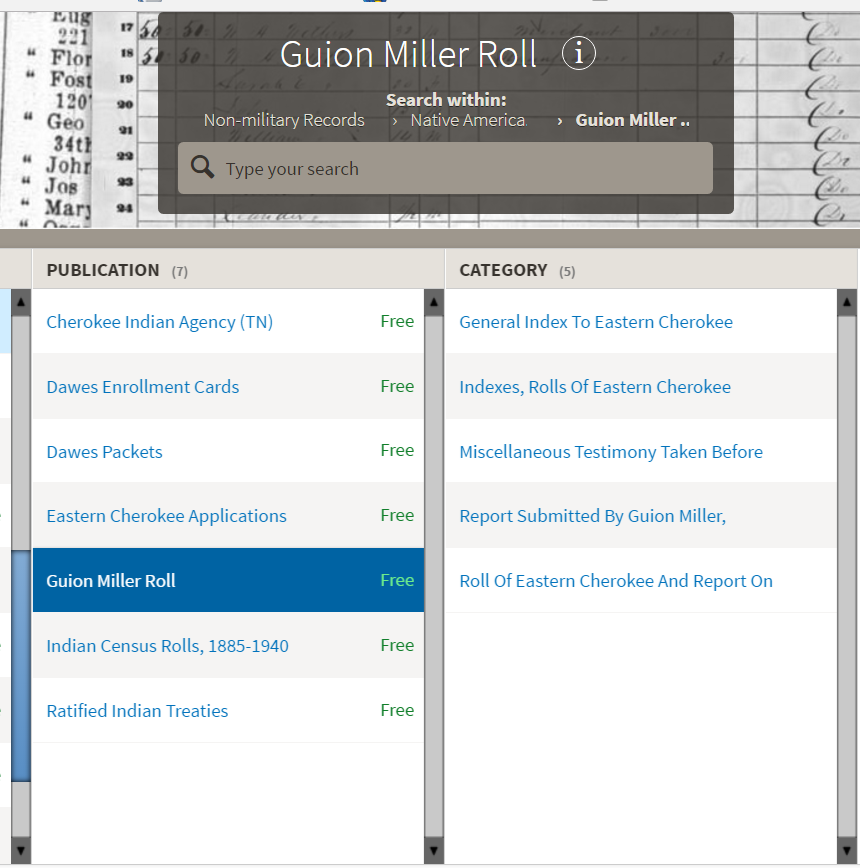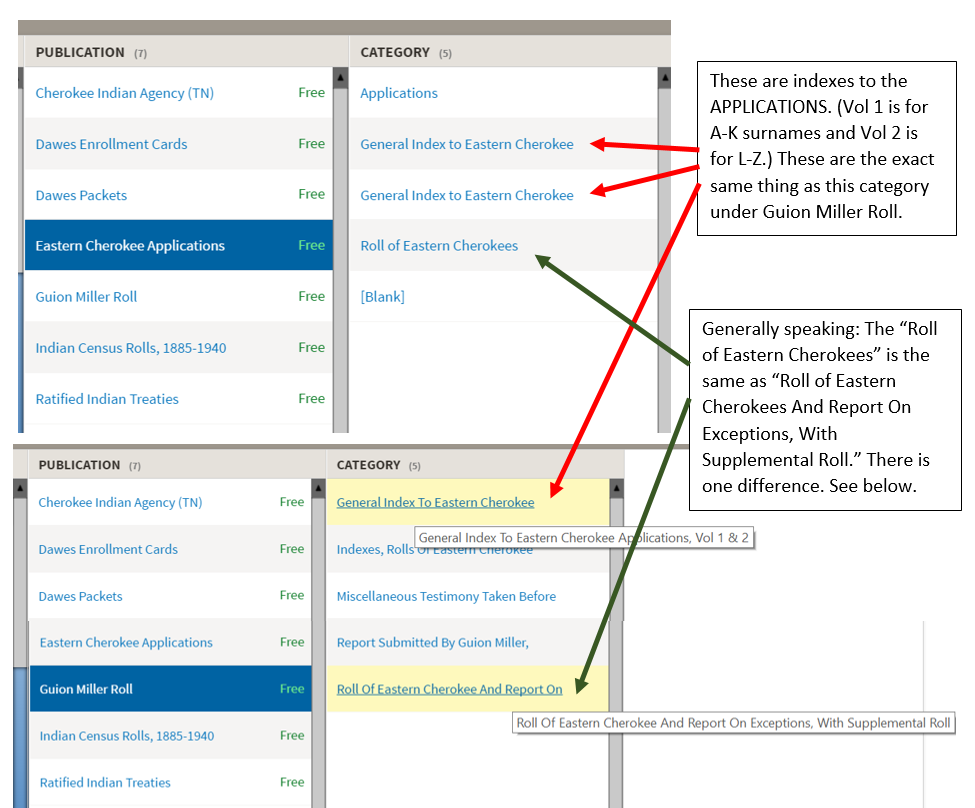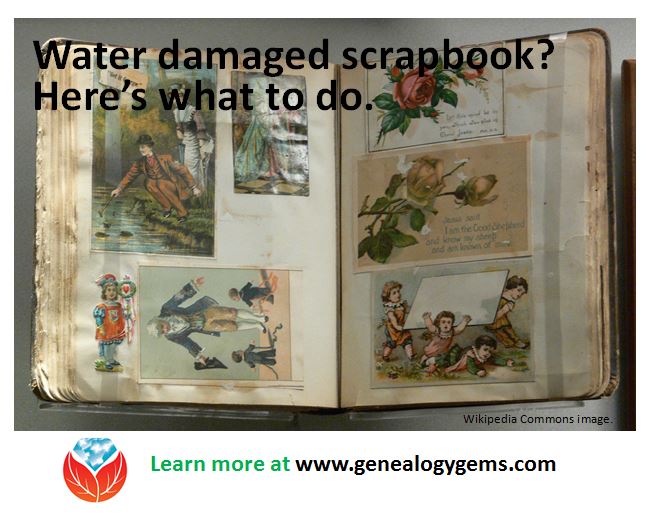Guion Miller Roll for Native American Research
Today is the last day that the Native American records collections is available for free on Fold3.com. Many American families have a tradition of Native American ancestry. Here are some helpful tips when researching the Guion Miller Roll at Fold3.com.

Pub. by Standard Souvenirs & Novelties, Inc., Knoxville, TN. Courtesy of Boston Public Library via Flickr.com.
Purpose of the Guion Miller Roll
In our most recent post, “Eastern Cherokee Applications for Native American Research,” we shared how to find and use the Eastern Cherokee Applications at Fold3.com. Today’s post is on the Guion Miller Roll. It is a list of those who were eligible after having filled out the Eastern Cherokee Application. These eligible persons were made into a list and that list, or roll, is called the Guion Miller Roll.
Looking to see if your ancestor is found on the Guion Miller Roll is important because information on this roll is later than the information in the Dawes Rolls. New information (like names of additional family members) in the Guion Miller Roll may not have been on the Dawes Rolls. Additionally, not finding a targeted ancestor listed with their family on the later Guion Miller Roll could also narrow down a date of death.
Fold3.com has the Guion Miller Roll online and has titled it Guion Miller Roll. Ancestry.com also has this list, but at Ancestry it is called U.S., Records Related to Enrollment of Eastern Cherokee by Guion Miller, 1908-1910.
Insights into the Guion Miller Roll Publication
Take a look at the titles under the publication of Guion Miller Roll at Fold3.com.
If you are not a member of Fold3.com, you will first need to go to www.fold3.com. Click in the center of the homepage where it says Free Access to Native American Records. Next, on the left you will see Records from Archives. Go ahead and click that.
From the list now showing on your screen, choose Guion Miller Roll.

Scroll to the bottom and click Learn more at the bottom right. You will be directed to a new screen. At this new screen, click Browse by title, over to the right.

You are directed to the publication titled Guion Miller Roll, and there is a list of five categories.
Let’s take a look at the list:

The categories under the Guion Miller Roll publication are:
- General Index to Eastern Cherokee
- Indexes, Rolls of Eastern Cherokee
- Miscellaneous Testimony Taken Before
- Report Submitted by Guion Miller
- Roll of Eastern Cherokee and Report On
Some of these publication titles are duplicates of other publication titles on Fold3. See this helpful image below:

Duplicates can actually be beneficial. As an example, in the last title called the Roll of Eastern Cherokee And Report on Exceptions, With Supplemental Roll (the title has been shortened on your screen, but that is the full name) there is something you may not have realized. This title is the same thing as the title Roll of Eastern Cherokees in the Eastern Cherokee Applications publication. Why would Fold3 have two of the same thing? There is one exception between these two nearly buy prescription medication online uk identical groups of records. The exception is: Eastern Cherokee Applications>Roll of Eastern Cherokees indicated in the top part of the image, has the roll numbers cut off in some of their digital images. In other words, if you had only looked at that one and not the Roll of Eastern Cherokee and Report on Exceptions, With Supplemental Roll under the Guion Miller publication, you would have missed that.
From time to time, a digital copy will be made of a record set that ends up being too dark, too blurry, or too crooked. When this happens, some of the information on the record will be cut off or simply not readable. It’s great when there is a second set of digital images because hopefully the second copy will not have these problems. As in all things, if there is ever more than one copy of something, check them both! You never know how they may differ in quality of copy.
Miscellaneous Testimony Taken Before
This title, Miscellaneous Testimony Taken Before, under the publication of Guion Miller Roll is filled with hints and clues for your genealogy story. I think it has been my most important find in the Guion Miller Roll publication.

Testimony relating to the Guion Miller Roll.
The testimonies are broken up into ten volumes. Within these volumes are short (or long) testimonies from the applicant, friends, family, or acquaintances regarding their belief that someone was or was not of Indian descent. Many of the testimonies include names and dates of vital events, as well as residences. Even though we must take these records with a grain of salt because individuals may have had something to gain financially, the information would be considered valuable clues. Each testimony indicates which application it attached to.
How to Find a Testimony Record Related to an Eastern Cherokee Application
There is no index by name for testimony volumes 1-9 at Fold3, so you would have to go volume-by-volume, then page-by-page to find your ancestor. That would take a very long time! But if you go to Ancestry.com to U.S., Records Related to Enrollment of Eastern Cherokee by Guion Miller, 1908-1910, you can search by name and you will find the image of the testimony there.
[Note: Volume 10 is broken down into three subcategories. These are Creek Testimony which includes an index on the fourth page of the roll, Poindexter Testimony with no index, and Sizemore Testimony, also with no index. The Poindexter testimonies and the Sizemore testimonies are those testimonies claiming their Native American heritage through those surnames.]More on Native American Research
Using Native American collections for genealogy research can be challenging. We hope this has helped you to better understand the ins and outs for using the record collections at Fold3. For even more helpful tips, read:
- Eastern Cherokee Applications for Native American Research
- The Dawes Collections for Native American Research
Disclosure: This article contains affiliate links and Genealogy Gems will be compensated if you make a purchase after clicking on these links (at no additional cost to you). Thank you for supporting Genealogy Gems!
What To Do If a Scrapbook Gets Wet (or Photo Album or Pictures)
 When family scrapbooks get wet, the result is not pretty. In fact, it can be quite dire for the scrapbook and its precious contents.
When family scrapbooks get wet, the result is not pretty. In fact, it can be quite dire for the scrapbook and its precious contents.
“Water can cause the bleeding of inks and dyes in journal entries, digital photographs, and decorative papers, causing them to appear blurry or streaked,” says this article in Scrapbook Retailer. “When exposed to water, some prints and materials will soften and stick to adjacent surfaces. Papers that get wet can become distorted or warped and some may even dissolve completely in water.”
Even more yucky? “Dirty water from sewage leaks, floodwaters from rivers, and colored liquids like fruit juices make the clean-up process more difficult and staining of the album materials more likely.”
Preventing the damage in the first place is of course the best option, but it’s not always an option we’re given. Floods happen. Spills happen. Windows get left open.
So what to do if a scrapbook gets wet? Or a photo album or loose pictures?
First, says the Library of Congress, “Take necessary safety precautions if the water is contaminated with sewage or other hazards or if there is active (wet or furry) mold growth.”
“In general, wet photographs should be air dried or frozen as quickly as possible,” states the Northeast Document Conservation Center website. “Once they are stabilized by either of these methods, there is time to decide what course of action to take.” But don’t delay too long, they say. “Time is of the essence: the longer the period of time between the emergency and salvage, the greater the amount of permanent damage that will occur.”
A few more tips from that same article on the Northeast Document Conservation Center website, written by Gary Albright:
- Save prints before plastic-based films, as the latter will last longer.
- Allow water to drain off photos first, as needed. Then air dry photographs, face up, laying flat on paper towels. Negatives should be hung to dry.
- Separate wet photos from each other and other items (like a scrapbook page) as much as possible.
- If photos are stuck together, freeze them as a bunch, wrapped in wax paper. Then thaw them. As they gradually thaw, peel photos off and let them air dry.
- Don’t worry if pictures curl up while they are drying. You can flatten them once they’re totally dry.
Unfortunately, some very old photo types will not survive a water bath at all. Others may weather a quick dip but not long-term exposure to dampness. It’s SO important to preserve images digitally! You can scan entire album pages if they fit on your scanner, so you can record captions or the arrangement of pictures on a page. Or use a scanner like Flip-Pal that has stitching software to help stitch together larger images.
In a pinch, snap pictures with your mobile device: close-ups of photographs and captions, and full-page images that at least capture how it’s laid out (even if at a lower resolution). Mobile Genealogy: How to Use Your Tablet and Smartphone for Family History Research by Lisa Louise Cooke has a chapter on digital imaging apps that can help you digitally preserve family albums and scrapbooks–whether they’ve gotten wet or not.
 Lisa Louise Cooke trusts all our computer files–including images, sound files and videos that have taken thousands of hours to create–to Backblaze online backup service, the official backup of Genealogy Gems. For about $5 a month (or $50 for an entire year), you can protect your files, too. It only takes a couple of minutes to give yourself the peace of mind of knowing that, even if disaster strikes, you’ll still be able to recover your digital files quickly and easily. Go to www.Backblaze.com/Lisa to get started.
Lisa Louise Cooke trusts all our computer files–including images, sound files and videos that have taken thousands of hours to create–to Backblaze online backup service, the official backup of Genealogy Gems. For about $5 a month (or $50 for an entire year), you can protect your files, too. It only takes a couple of minutes to give yourself the peace of mind of knowing that, even if disaster strikes, you’ll still be able to recover your digital files quickly and easily. Go to www.Backblaze.com/Lisa to get started.
